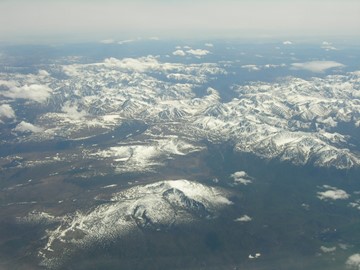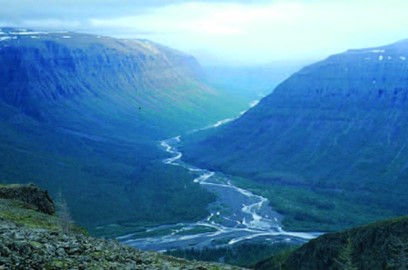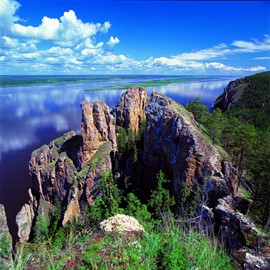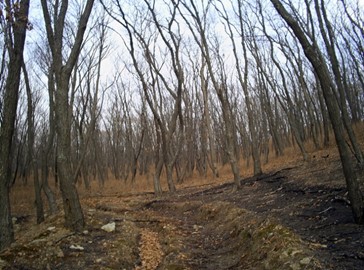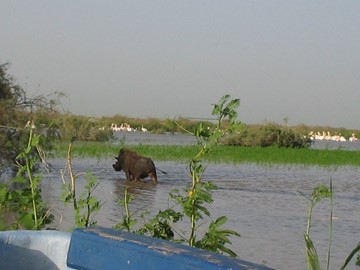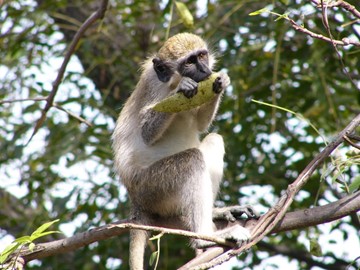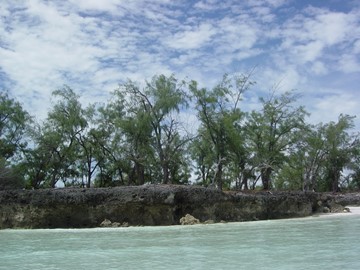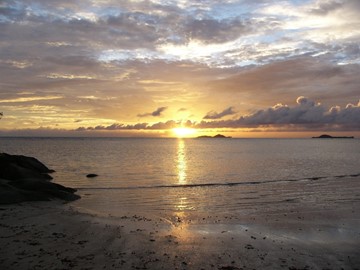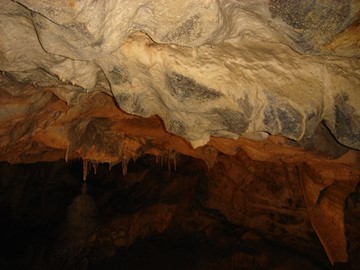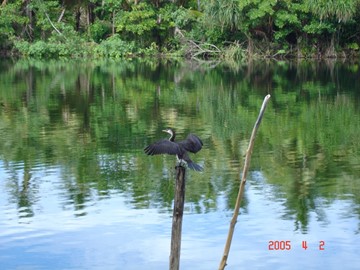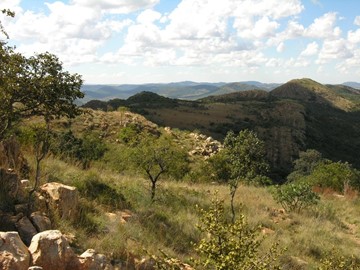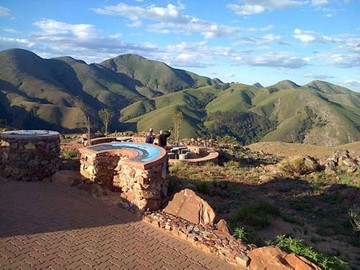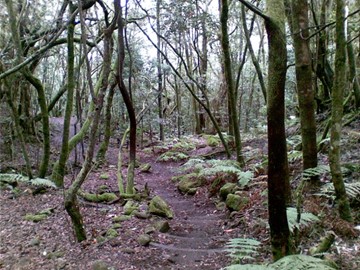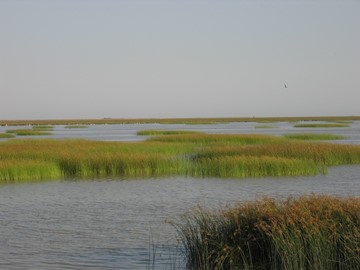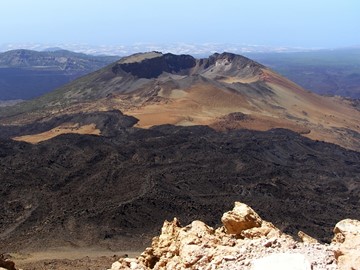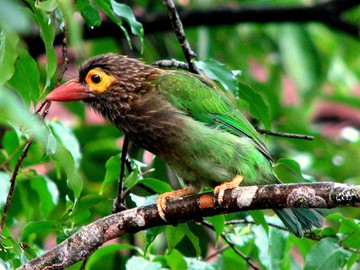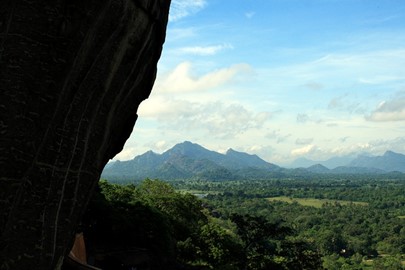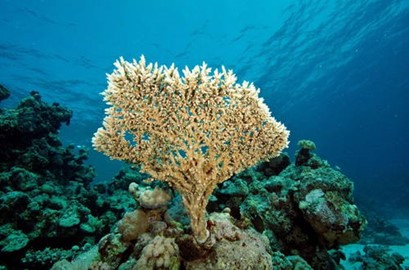category :: natural
Lake Baikal
Lake Baikal, a UNESCO World Heritage site in Russia, is renowned for its exceptional depth and clarity, holding about 20% of the world's unfrozen freshwater. Formed over 25 million years ago, it hosts a unique ecosystem with thousands of endemic species, including the Baikal seal. Its stunning landscapes and geological significance make it a natural wonder and a critical site for scientific research.
Volcanoes of Kamchatka
The Volcanoes of Kamchatka, a UNESCO World Heritage site in Russia, is a remarkable geological region featuring one of the most active volcanic zones on Earth. This site showcases a diverse range of volcanic landscapes, including towering stratovolcanoes, lava fields, and thermal springs, formed by the subduction of the Pacific Plate beneath the Eurasian Plate. It is also home to unique ecosystems, supporting rare species like the Kamchatka brown bear and Steller’s sea eagle. The site’s pristine natural bea... Read More
Golden Mountains of Altai
The Golden Mountains of Altai, a UNESCO World Heritage site in Russia, encompass a stunning landscape of rugged peaks, deep valleys, and pristine rivers. This biodiverse region is home to rare species like the snow leopard and Altai argali, thriving amidst vast forests and alpine meadows. Its geological significance and rich cultural history, tied to ancient nomadic traditions, make it a globally treasured natural and historical gem.
Western Caucasus
The Western Caucasus, a UNESCO World Heritage site in Russia, is renowned for its stunning natural beauty and ecological significance. This region showcases a diverse range of landscapes, from snow-capped mountains to lush forests, and serves as a critical habitat for numerous rare and endangered species. Its unique geological formations and rich biodiversity highlight its importance as a pristine example of temperate ecosystems, drawing attention for both conservation efforts and scientific study.
Wrangel Island
Wrangel Island, a UNESCO World Heritage site in Russia, is a remote Arctic sanctuary renowned for its exceptional biodiversity and paleontological significance. Located in the Chukchi Sea, it serves as a critical habitat for polar bears, walruses, and migratory birds, while also hosting one of the world’s largest populations of Pacific walrus. The island’s pristine ecosystem, untouched by glacial activity during the last Ice Age, preserves ancient flora and fauna, offering a unique glimpse into the Pleistoc... Read More
Putorana Plateau
The Putorana Plateau, a UNESCO World Heritage site in Russia, is a vast basalt plateau formed by ancient volcanic activity, featuring dramatic landscapes of deep canyons, waterfalls, and over 25,000 lakes. Often called the 'Land of a Thousand Waterfalls,' it hosts unique ecosystems with rare species like the Putorana snow sheep, thriving in isolation due to its remote Arctic location. Its geological significance and biodiversity make it a natural wonder, preserved for its pristine wilderness and scientific ... Read More
Lena Pillars
Lena Pillars, a UNESCO World Heritage site in Russia, is a stunning geological formation featuring towering, naturally sculpted rock columns along a riverbank. These ancient limestone pillars, some reaching up to 150 meters in height, were formed over millions of years through erosion and weathering, offering a unique glimpse into Earth's distant past. The site also holds cultural significance, with archaeological evidence of early human activity and its revered status among local indigenous communities. It... Read More
Central Sikhote Alin
Central Sikhote-Alin, a UNESCO World Heritage site in Russia, is a remarkable temperate forest region in the Far East, celebrated for its extraordinary biodiversity. This mountain range hosts a unique blend of northern taiga species, like reindeer and brown bears, alongside subtropical wildlife, including the endangered Amur tiger and Himalayan bear. Its pristine ecosystems, shaped by a mix of boreal and subtropical influences, support a vast array of rare and endemic flora and fauna. Recognized in 2001, it... Read More
Pitons Management Area
This World Heritage site in Saint Lucia encompasses a stunning volcanic landscape featuring two towering spires—Gros Piton and Petit Piton—rising dramatically from the sea, surrounded by lush tropical forests and vibrant coral reefs. Spanning 2,909 hectares, it includes a geothermal field with sulphur springs and fumaroles, showcasing the region’s volcanic history and natural beauty. Recognized by UNESCO in 2004, the area supports diverse ecosystems with endemic species and offers breathtaking views, making... Read More
Djoudj National Bird Sanctuary
Djoudj National Bird Sanctuary, a UNESCO World Heritage site in Senegal, is a vital wetland ecosystem renowned for its rich biodiversity. This sanctuary serves as a critical habitat for over 1.5 million migratory birds, including flamingos, pelicans, and herons, making it a key stopover on the West African flyway. Its unique landscape of marshes, lakes, and channels supports a variety of wildlife and offers exceptional opportunities for birdwatching and ecological research. The site’s global significance li... Read More
Niokolo Koba
Niokolo-Koba, a World Heritage site in Senegal, is a biodiverse sanctuary along the Gambia River, renowned for its rich ecosystems and wildlife. It hosts a variety of habitats, including gallery forests, savannahs, and wetlands, supporting species like lions, leopards, elephants, and the rare West African chimpanzee. The site also preserves archaeological remains, offering insights into ancient human history. Despite challenges from poaching and development, it remains a critical conservation area and a tes... Read More
Aldabra Atoll
Aldabra Atoll, a UNESCO World Heritage site in Seychelles, is a pristine coral atoll renowned for its exceptional biodiversity. It hosts one of the world’s largest populations of giant tortoises, thriving in a largely untouched ecosystem of mangrove forests, lagoons, and seagrass beds. The atoll’s isolation has preserved its unique flora and fauna, including rare birds like the Aldabra rail and vibrant marine life such as turtles and reef fish. Its scientific significance and natural beauty make it a critic... Read More
Vallée de Mai
Vallée de Mai, a UNESCO World Heritage site in Seychelles, is a pristine palm forest renowned for its unique biodiversity. This ancient ecosystem is home to the iconic coco de mer, a rare palm species bearing the world’s largest seed, alongside other endemic flora and fauna like the Seychelles black parrot. Often described as a 'living museum,' it offers a glimpse into a prehistoric world, preserved through its isolation and protected status. Visitors can explore its lush trails, immersing themselves in a n... Read More
Skocjan Caves
The Škocjan Caves, a UNESCO World Heritage site in Slovenia, are a remarkable natural wonder renowned for their vast underground canyons, dramatic karst formations, and one of the world’s largest subterranean river systems. This unique cave network, shaped by the Reka River, features towering stalactites, stalagmites, and breathtaking chambers, including the colossal Martel Chamber. Recognized for its geological, ecological, and cultural significance, the site offers a glimpse into an ancient landscape that... Read More
East Rennell
East Rennell, located in the Solomon Islands, is a UNESCO World Heritage site renowned for being the largest raised coral atoll in the world. This remote location hosts a rich biodiversity, including unique species of birds, bats, and invertebrates, thriving within its dense forest and extensive lake system. The site holds significant cultural value to the local Polynesian population, who maintain traditional practices tied to the land and its resources. Its natural beauty and ecological importance make it ... Read More
iSimangaliso
iSimangaliso Wetland Park, a UNESCO World Heritage site in South Africa, is a biodiverse coastal reserve featuring a stunning mosaic of ecosystems, including swamps, lakes, beaches, coral reefs, and savannahs. Home to an array of wildlife such as hippos, crocodiles, and rare bird species, it holds significant ecological value and offers a pristine natural landscape. The park also encompasses historical and cultural landmarks, reflecting its deep-rooted heritage and importance to conservation efforts.
Vredefort Dome
The Vredefort Dome, a UNESCO World Heritage site in South Africa, is the world's largest and oldest known meteorite impact structure, formed over 2 billion years ago when a massive asteroid struck Earth. This geological wonder features a central dome of uplifted granite surrounded by concentric rings of hills, showcasing unique rock formations and evidence of the catastrophic event that shaped the region. Recognized for its scientific significance, it provides valuable insights into Earth's history and the ... Read More
Cape Floral Region
The Cape Floral Region, a World Heritage site in South Africa, is renowned for its exceptional biodiversity and unique fynbos vegetation, a type of shrubland found nowhere else on Earth. This region hosts an astonishing variety of plant species, with over 9,000 types, many of which are endemic, making it one of the planet’s richest floral kingdoms. It also encompasses dramatic landscapes, including rugged mountains and coastal plains, which support a delicate ecosystem recognized for its global ecological s... Read More
Barberton Makhonjwa Mountains
The Barberton Makhonjwa Mountains, a UNESCO World Heritage site in South Africa, are renowned for their geological significance, featuring some of the oldest and best-preserved volcanic and sedimentary rocks on Earth, dating back 3.5 billion years. This site offers a unique window into the planet's early history, showcasing evidence of ancient microbial life and early tectonic processes. Its rugged terrain, adorned with greenstone belts, attracts scientists and visitors alike for its scientific value and na... Read More
Garajonay
Garajonay National Park, a UNESCO World Heritage site in Spain, is renowned for its lush laurel forests, a rare remnant of ancient subtropical ecosystems. Located on La Gomera in the Canary Islands, it boasts diverse flora and fauna, dramatic volcanic landscapes, and misty trails that attract hikers and nature enthusiasts. The park’s unique ecological significance and well-preserved natural beauty make it a global treasure.
Doñana
Doñana National Park, a UNESCO World Heritage site in Spain, is a vital biodiversity hotspot renowned for its diverse ecosystems, including marshes, dunes, and forests. It serves as a critical habitat for numerous species, such as the Iberian lynx and migratory birds, while also supporting unique flora. The park’s ecological significance and natural beauty make it a key conservation area and a testament to Spain’s rich environmental heritage.
Teide
Teide National Park, a UNESCO World Heritage site in Spain, is renowned for its stunning volcanic landscape, dominated by Mount Teide, the country’s highest peak. The park features dramatic lava fields, unique rock formations, and a diverse range of endemic flora and fauna adapted to its high-altitude environment. Its geological significance and breathtaking scenery make it a globally recognized natural treasure, attracting visitors for hiking, stargazing, and scientific exploration.
Sinharaja Forest
Sinharaja Forest, a UNESCO World Heritage site in Sri Lanka, is a biodiverse tropical rainforest renowned for its rich ecosystem. It serves as a habitat for numerous endemic species, including rare birds, mammals, and plants, making it a critical conservation area. The forest’s lush canopy and unique flora attract researchers and nature enthusiasts alike. Its global significance lies in its role as a living testament to the island’s ecological heritage.
Central Highlands
The Central Highlands, a UNESCO World Heritage site in Sri Lanka, is renowned for its breathtaking biodiversity and stunning landscapes. This protected region encompasses montane forests, grasslands, and rugged peaks, harboring a rich array of endemic flora and fauna, including rare species like the Sri Lankan leopard and purple-faced langur. The area also holds cultural significance with ancient tea plantations and colonial-era architecture, reflecting its historical role in the island's tea industry. Its ... Read More
Sanganeb
Sanganeb, a UNESCO World Heritage site in Sudan, is a pristine coral reef atoll in the Red Sea, renowned for its exceptional biodiversity and striking underwater landscapes. It features diverse marine habitats that support a rich array of species, including sharks, manta rays, and vibrant coral communities, making it a globally significant ecosystem. The site’s clear waters and complex reef structures offer a unique window into the northernmost tropical coral systems, earning it recognition for its outstand... Read More


